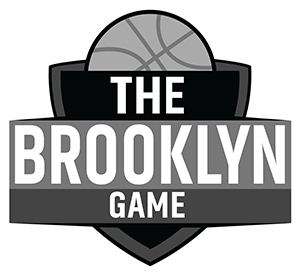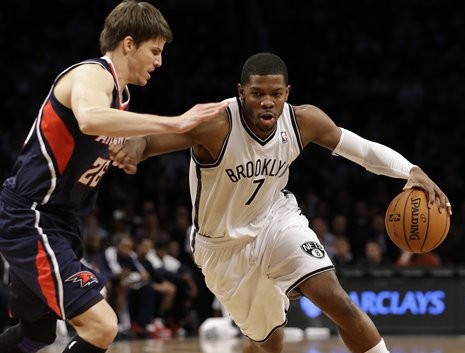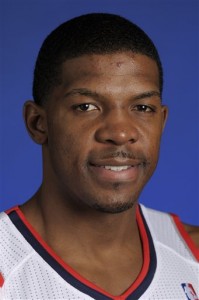
Team Name: Atlanta Hawks
Last Year’s Record: 47-35 (2nd place, Southeast Division)
Head Coach: Mike Woodson
Comings: Joe Smith, Jamal Crawford, Jeff Teague (no. 19), Sergiy Gladyr (no. 49) and Jason Collins.
Goings: Flip Murray, Acie Law and Speedy Claxton.
Blogger Thoughts, Bret LaGree, Hoopinion:
I expect the Hawks to be about the same as last year: clearly better than most of the Eastern Conference but nowhere near as good as Orlando, Cleveland, and Boston. The team didn’t make any moves to improve its rebounding and it’s unlikely that everybody on the roster will again better their career 3PTFG%. Jamal Crawford should replace Flip Murray’s offensive production of the bench (albeit at six times the cost but that atypical monetary splurge won’t be an issue until Summer 2010) though Crawford’s defensive limitations may prove playing him alongside Mike Bibby to be unfeasible. If Marvin Williams, Josh Smith, and Al Horford stay healthier than they did last season, the frontcourt might make up for any defensive decline on the perimeter. Joe Smith’s a better insurance policy in the post than was Solomon Jones but that’s more about limiting your downside than boosting your upside.
On the Nets:
I think the Nets have an excellent chance to secure a very high pick in the 2010 Draft. That, combined with controlling Devin Harris and Brook Lopez for several years and having $20-some million in contracts coming off the books, could make the rebuilding period brief. As good as Harris and Lopez are and this being the Eastern Conference the Nets are probably only one player putting up a classic contract-year and either Douglas-Roberts or Terrence Williams blossoming away from contending for the eighth-seed whether that’s in the franchise’s long-term interests or not.
Comparing the Starters:
Starting PG – Mike Bibby (14.9 pp., 5.0 apg, 16.38 PER) vs. Devin Harris (21.3 pp., 6.9 apg, 21.65 PER): Mike Bibby had a bounce back season last year, but he’s still four seasons removed from when he was a point guard putting up a consistent PER of 19 and over. He’s a good three-point shooter and doesn’t turn the ball over, though he does a vast majority of his scoring away from the rim.
Advantage: Nets. Bibby is hitting the point in his career where he really should start showing his age. He’s still a very solid point guard in this league, but Harris has potential to get even better.
Starting SG – Joe Johnson (21.4 pp., 5.8 apg, 18.26 PER) vs. Courtney Lee (8.4 pp., 1.2 apg, 10.78): Johnson is a three-time all-star whose points per 40 minutes have been above 21 for three consecutive years. He’s not the greatest jump shooter, with his True Shooting percentage falling below league average for his position. He is very good at creating shots – for himself and others. He finished sixth at his position in pure point rating, and posted a rating that was better than a lot of the league’s point guards.
Advantage: Hawks. Johnson at 6’8″ creates a lot of matchup problems for opposing teams’ guards. He’s still a very good scorer and is in a contract year, which always seems to find a way to impact a player’s performance.
Starting SF – Marvin Williams (13.9 pp., 6.3 rpg, 16.04 PER) vs. Chris Douglas-Roberts (4.9 ppg, 1.2 apg, 12.22 PER): Williams evolved into a big-time three point shooter last year, averaging nearly three attempts a game and averaging 35.5 percent for the year. He’s also a very good rebounder for his position, with a rebound rate that was seventh among small forwards. His length makes him a very good perimeter defender.
Advantage: Hawks. Williams has shown improvement every year he’s been in the league and has learned to become a more efficient scorer while using the ball less, good signs for a young player.
Starting PF – Josh Smith (15.6 pp., 7.2 rpg, 17.28 PER) vs. Yi Jianlian (8.6 pp., 5.3 rpg, 10.98 PER): After four consecutive years of increasing PER, Smith saw a drop-off last year by more than 2 points. He blocked less shots and his free throw percentage plummeted, though he still posted a career high in True Shooting percentage. There was really no explanation for the decline, so he’s a player to watch this season to see which direction he’s headed.
Advantage: Hawks. Smith is only 23 so there’s reason to believe he can get his game headed back in the right direction. He seems to shoot too many jumpers for a big man, much like Yi, but even with his decline, he’s still an all-around better talent than Yi.
Starting C – Al Horford (11.5 ppg, 9.3 rpg, 17.06 PER) vs. Brook Lopez (13.0 pp., 8.1 rpg, 17.94 PER): Horford is yet another young and talented member of the Hawks’ starting lineup. He saw his PER jump more than two points from his rookie season, which was due to his scoring averages, true shooting percentage and assist ratios increase. He doesn’t turn the ball over much either. He’s a little undersized for a center, which creates defensive matchup problems, but overall, he’s a solid defender.
Advantage: Even. If Brook could take another step forward this season, I’ll give him the edge, but when you look at the all-around games of both centers, they each have different strengths and weaknesses. Lopez is a better scorer but Horford is already close to averaging a double-double.
Bench – Jeff Teague was a great shooter at Wake Forest though not necessarily the best pure point guard. Jamal Crawford drives people crazy with all the shooting and no defense, but he still can score. Maurice Evans is a good three-point shooter whose game is unspectacular everywhere else. Joe Smith is a nice veteran presence off the bench. Zaza Pachulia fouls a lot, but he’s developing into a very solid backup center. And most Nets fans can talk to you about all of Jason Collins’ offensive gifts.
Advantage: Hawks. A versatile bench filled with shooters and big physical defenders. The lack of a pure backup point guard hurts things a bit, but the Hawks are just a solid team up and down.


















